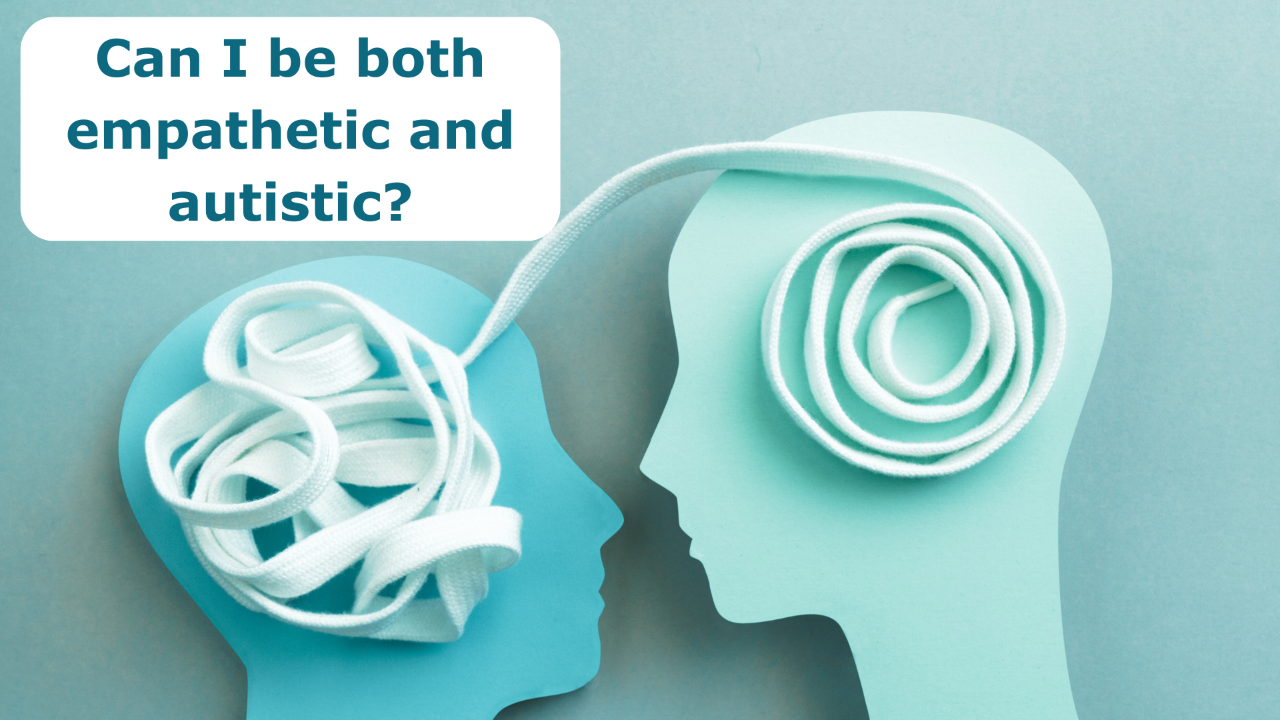Can I be very empathetic and still be autistic?

The short answer is yes. Autistic people, like everyone else, sit across a wide emotional continuum. Some experience alexithymia (difficulty identifying or naming feelings), some have muted or mixed emotional awareness, some have a more balanced awareness and others feel other people’s states so strongly they describe hyper-empathy. Recent research shows these different profiles are real, common and important for how we support emotional wellbeing.
Emotions as a continuum (not a single “autism = no empathy” box)
A common myth rooted in older studies and stereotypes is that autistic people lack empathy. Contemporary research paints a much richer picture:
- Alexithymia (difficulty noticing, differentiating or naming one’s own feelings) is more common in autistic groups but is not the same thing as autism itself.
- Many autistic people show poorer performance on facial emotion recognition tasks on average but the challenges are not uniform.
- Empathy has subcomponents: cognitive empathy (understanding what someone else feels / thinking about it) and affective empathy (feeling with someone). Research shows that autistic people can have intact or even strong affective empathy while having more difficulty with cognitive empathy and vice versa resulting in what some researchers call empathic disequilibrium.
- And recent research documents heightened or overwhelming empathy (hyper-empathy) in many autistic people that can be exhausting or dysregulating.
What each point on the continuum can look like in everyday life
Alexithymia / muted awareness
- “I feel ‘off’ but can’t put a name on it - am I tired, anxious or annoyed?”
- May miss internal cues (such as rapid heartbeat indicating anxiety) or confuse emotional labels.
Mixed / spiky awareness
- May sense affect but muddle which emotion it is and may read body language inconsistently depending on context.
Balanced awareness
- Can label own feelings and tends to read others fairly reliably.
Heightened affective empathy / hyper-empathy
- “When someone cries, I feel it physically.” Can lead to rapid overwhelm, burnout or emotional flooding.
Why knowing your pattern matters: regulation needs differ
Emotion-regulation tools aren’t a one size fits all. Knowing where you sit on the emotion continuum can point you to different helpful approaches:
- If you lean toward alexithymia / muted awareness
Aim to increase interoceptive awareness and labelling skills. Practices include: simple body-scans, emotion vocabulary charts, rating intensity (0-10), journaling with prompts (“What happened? What did I feel in my body?”). Psychoeducation and targeted therapies can also help.
- If you tend to have mixed/spiky awareness
Use external anchors to disentangle emotions: short pauses to name sensations, sensory grounding (5-4-3-2-1) or a feelings chart that helps you to more clearly identify the emotion. Reflecting by talking it out with a trusted friend, therapist or using voice notes can also help to bring clarity.
- If you’re balanced
Maintain skills: regular check-ins, healthy boundaries and predictable self-care. Practice flexible coping so you can adapt when stressors increase.
- If you experience heightened empathy / hyper-empathy
Prioritise containment and boundary skills to prevent overwhelm where possible. Techniques that help include brief disengagement (e.g. step outside for 5 minutes), use of sensory tools (e.g. noise-reducing headphones / earplugs, weighted blanket), clear verbal / physical boundaries and scheduled recovery time. Learn to distinguish your internal state from others’ feelings.
Showing up as yourself
Research shows autism is associated with diversity in emotional experience and not a single profile. Knowing whether you usually miss emotions, get flooded by them or sit somewhere in between helps you pick strategies that actually work. Having this more nuanced insight into the way you operate is both validating and also helpful in enabling you to be an active participant in promoting your own wellbeing.
Linda Philips
MSc. Human Communication
Linda Philips works closely with neurodivergent individuals and their families, supporting emotional wellbeing, relationships and self-management skills. She offers individual sessions, runs a supportive group for university students, contributes to autism assessments and provides training for businesses, helping employers and employees find effective ways of working together. Linda is passionate about helping people understand themselves better and thrive in their daily lives. If you’d like to work with her, you can book a free call here.
References
- Kinnaird E, Stewart C, Tchanturia K. Investigating alexithymia in autism: A systematic review and meta-analysis. Eur Psychiatry. 2019 Jan;55:80-89. doi: 10.1016/j.eurpsy.2018.09.004. Epub 2018 Nov 3. PMID: 30399531; PMCID: PMC6331035.
- Yeung MK. A systematic review and meta-analysis of facial emotion recognition in autism spectrum disorder: The specificity of deficits and the role of task characteristics. Neurosci Biobehav Rev. 2022 Feb;133:104518. doi: 10.1016/j.neubiorev.2021.104518. Epub 2021 Dec 31. PMID: 34974069.
- Shalev I, Warrier V, Greenberg DM, Smith P, Allison C, Baron-Cohen S, Eran A, Uzefovsky F. Reexamining empathy in autism: Empathic disequilibrium as a novel predictor of autism diagnosis and autistic traits. Autism Res. 2022 Oct;15(10):1917-1928. doi: 10.1002/aur.2794. Epub 2022 Aug 20. PMID: 36053924; PMCID: PMC9804307.
- https://www.shu.ac.uk/news/all-articles/latest-news/autism-and-hyper-empathy-study?utm
